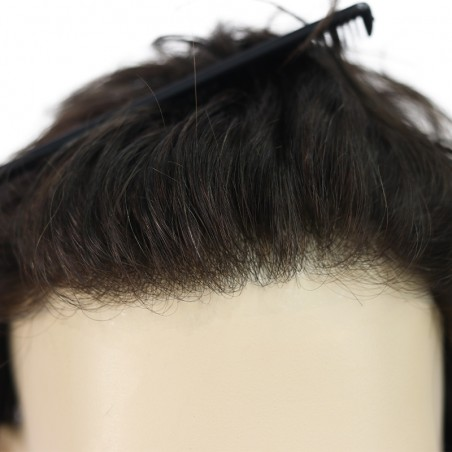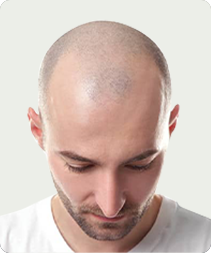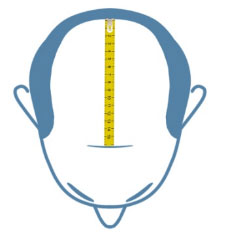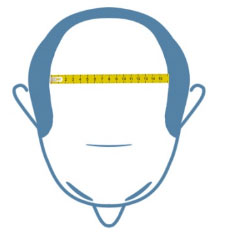Choosing between a toupee or a wig can be a difficult decision when it comes to addressing hair loss or achieving a new look. The right choice depends on factors like how much coverage you need, your lifestyle, and comfort preferences. While toupees are designed for partial coverage and offer a more discreet solution, wigs cover the entire scalp, providing more dramatic change and style flexibility. This article will help you understand the key differences between toupees and wigs, comparing fit, style, and comfort, so you can make the best choice for your needs.
Understanding The Basics: Toupee Vs. Wig
What Is A Toupee?
A toupee is typically a small, partial hairpiece designed to cover specific areas of the scalp, like a bald spot or thinning crown. It’s often custom-made to blend in with your natural hair. Toupees can be attached with tape, adhesive, or clips, and are more commonly used by men, although they can be worn by women as well. They offer a natural look by seamlessly integrating with your existing hair.
What Is A Wig?
A wig, on the other hand, is a full headpiece that covers the entire scalp. Wigs come in a variety of styles, lengths, and colors, and can be purchased ready-made or customized. Wigs are typically made from synthetic fibers or human hair, and they can be a more flexible option if you're looking for a dramatic change in style or coverage.
Key Differences Between Toupees And Wigs
The key difference between a toupee and a wig is coverage. Toupees are designed to cover specific areas, while wigs cover the entire scalp. Toupees are usually smaller and more discreet, blending with your natural hair, while wigs provide a more noticeable transformation in both style and volume. The decision comes down to how much coverage you need and whether you prefer a more natural look or a completely new style.

How To Choose The Best Fit And Attachment Method
Attachment Methods For Toupees
Toupees are attached using various methods, such as tape, adhesive, or clips. Adhesive and tape provide a secure fit and can be worn for longer periods of time, but some people may find them irritating to the skin. Clips are more temporary but easier to apply and remove, making them ideal for occasional wear. Choosing the right attachment method depends on how long you want to wear the toupee and your personal comfort preferences.
Attachment Methods For Wigs
Wigs typically use adjustable straps, combs, or clips to secure them to your head. Adjustable straps allow for a custom fit, making them a great option if you need flexibility. Wigs can also be fitted with combs or clips for extra security, especially if you have finer or shorter hair that needs more support. Wigs are often easier to apply than toupees, especially for beginners.
How To Achieve A Comfortable, Natural Fit
For both toupees and wigs, ensuring a comfortable and secure fit is crucial. Be sure to select a piece that fits your head shape and size. It shouldn’t be too tight, causing discomfort or irritation, but it also shouldn’t be so loose that it moves around throughout the day. Professional fitting or even virtual fitting tools can help you find the right piece that fits just right.
Comfort and Material Considerations For Daily Wear
Understanding Base Materials (Lace, Monofilament, PU)
The base material of your toupee or wig significantly impacts comfort. Lace and monofilament bases are breathable, allowing for better airflow to your scalp and reducing sweat buildup. Polyurethane (PU) bases are more durable but tend to be less breathable. If you’re going to wear the piece every day, opting for a breathable lace or monofilament base can help keep you comfortable, especially in warmer climates.
Weight And Comfort For Daily Use
When choosing a toupee or wig, comfort is key. If you’re going to wear the hairpiece all day, look for something lightweight. Heavier wigs or toupees can feel uncomfortable over time, especially if you’re wearing them for hours. A lightweight option will be easier to manage and more comfortable for daily wear.
Hypoallergenic Choices And Scalp Ventilation
If you have sensitive skin or a sensitive scalp, hypoallergenic materials and adhesives are a must. Look for options specifically designed for sensitive skin to avoid irritation. Additionally, ensuring your hairpiece allows for good ventilation will help keep your scalp healthy and reduce the risk of conditions like dandruff or itching.

Style, Appearance, And Customization
Personal Style: Customizing Your Look
One of the biggest benefits of both toupees and wigs is the ability to customize your look. Toupees are typically more tailored to blend with your natural hair, allowing you to style your piece in a way that feels familiar and natural. Wigs, however, offer more versatility, as they come in a variety of styles, textures, and colors. Whether you want a subtle change or a complete transformation, both options offer flexibility to suit your personal style.
Achieving A Natural Look: Color, Texture, And Blending
To achieve the most natural look, choose a toupee or wig that matches your natural hair color and texture. Wigs and toupees are available in a variety of shades, and some can be customized to perfectly match your existing hair. When selecting a piece, consider the texture of your natural hair and look for something that blends seamlessly to avoid a noticeable contrast.
Occasions, Lifestyle, and Professional Settings
Your lifestyle and the occasions you’re attending will influence the type of hairpiece you choose. For everyday use, you may want something that’s natural-looking and comfortable, while for special events, you might choose a wig for a more dramatic look. It’s important to choose something that suits your work environment and social activities.
Maintenance, Care, and Longevity
Cleaning and Care for Your Toupee or Wig
Proper maintenance is essential to prolong the life of your toupee or wig. For synthetic hairpieces, washing should be done every 7-10 wears, while human hairpieces may require more frequent cleaning. Use a gentle, sulfate-free shampoo and conditioner designed for hairpieces to maintain the texture and shine of the hair.
Proper Drying, Storage, and Travel Tips
After washing, allow your hairpiece to air dry on a wig stand or mannequin head. This helps preserve its shape. Store your piece in a cool, dry place, away from direct sunlight, to prevent damage. If you’re traveling with your wig or toupee, consider purchasing a travel case to keep it protected and maintain its shape.
Knowing When To Replace or Repair
A toupee or wig can last anywhere from a few months to a couple of years, depending on how well you take care of it and how often you wear it. Over time, you may notice wear and tear, such as shedding, fraying, or a loss of shape. Knowing when to replace or repair your hairpiece is important to maintain a fresh, natural look.
Compatibility With Your Lifestyle
Active Lifestyles: Finding A Sport-Friendly Solution
If you lead an active lifestyle, you’ll need a toupee or wig that stays in place during physical activities. Look for options with secure attachments that won’t shift or slip. Many toupees and wigs now come with sweat-wicking liners or moisture-resistant materials, making them ideal for exercise or outdoor activities.
Climate Considerations: Choosing Pieces For Hot or Humid Weather
In hot or humid weather, a breathable, lightweight base is key to keeping cool and comfortable. Look for wigs and toupees made with lace or monofilament bases that allow air to circulate to your scalp. These materials help reduce sweating and irritation during the warmer months.
Occasional Use vs. Everyday Wear: What’s Right For You?
If you only need a hairpiece for special events, a wig might be a good choice for dramatic style changes. However, for everyday wear, a toupee might be a better option, offering a more natural look and feel while blending seamlessly with your existing hair.
.jpg)
Decision-Making: What’s The Best Choice For You?
Assessing Your Personal Needs
Think about your lifestyle, budget, and how often you plan to wear the hairpiece. Do you need a wig for occasional use, or is a toupee better for everyday wear? Taking all these factors into account will help you choose the right solution for your needs.
Using Virtual Try-On Tools or Sample Kits
Some vendors offer virtual try-on tools that allow you to see how different styles and colors will look on you. Sample kits are another great option for testing the feel and fit of different hairpieces before committing to a full purchase.
When To Consult A Professional Specialist
If you’re unsure which piece will work best for you, don’t hesitate to consult a professional stylist. They can help you select the right material, style, and fit based on your unique needs.
FAQs And Common Issues
How To Prevent Slipping Or Shifting
If your hairpiece shifts or slips, try using additional clips or adhesive. A professional fitting can also help ensure the piece stays securely in place.
How To Handle Itching Or Discomfort
If you experience itching or discomfort, consider switching to hypoallergenic materials or trying a different attachment method. Scalp hygiene also plays a major role in comfort.
Can You Swim, Sleep, Or Exercise With It?
It’s best to remove your hairpiece during sleep or swimming to prolong its life. However, some toupees and wigs are designed for active wear and can handle light exercise or moisture.
Conclusion
When deciding between a toupee or a wig, take into account your comfort, lifestyle, and budget. Each option has its advantages and disadvantages, and the ideal choice depends on your specific needs. Use this guide to refine your options, test samples, and seek advice from professionals to find the right hairpiece for you. Be sure to choose reputable brands, read customer reviews, and consult hairpiece experts to guarantee you get the best value for your investment.



Comments (0)